|
Old Trafford
As a child I was a massive Manchester United fan and I
really do remember where I was when the news of the Munich
Air Disaster happened. I grew up in Longsight but in
1960 I moved to live in Old Trafford not far from the
Cricket Ground and the football stadium. What I
didn't realize at the time was that every week when we did
games at Ardwick Tech I ran out on to ground that was
where Newton Heath F. C. United predecessors had
played. On a very modest ground on North Road, in
Newton Heath the team which was to become United played
their home games and once a week I rode on a bus to play
football and cricket on that site. 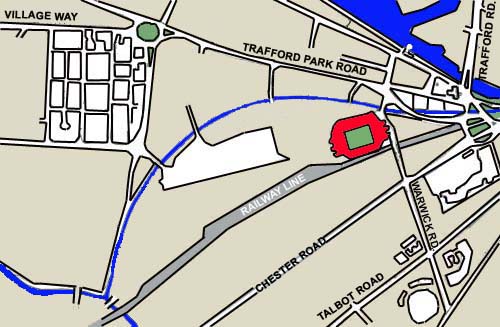 The Old Trafford
Football Ground has changed enormously over the
years. The English Heritage image above shows it
as it is today. Below, is an image that I found
on Wikikmedia Commons, displayed there because it is
in the public domain, showing the stadium in
1930. As you can see, only one section of stand
was covered.
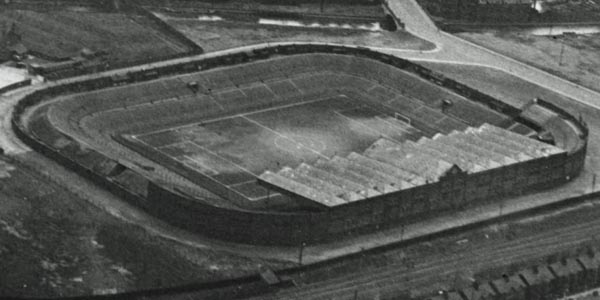 During the air
raids of 1941 the stadium was seriously damaged
and for a period of 8 years United had to share
City's ground. Below you can see the stadium
again in 1946. It would appear that the
stadium is either still damaged or under
reconstruction.
 Below you can see Old
Trafford again in 1953 by which time the south
stand roof and the north stand roof are intact.
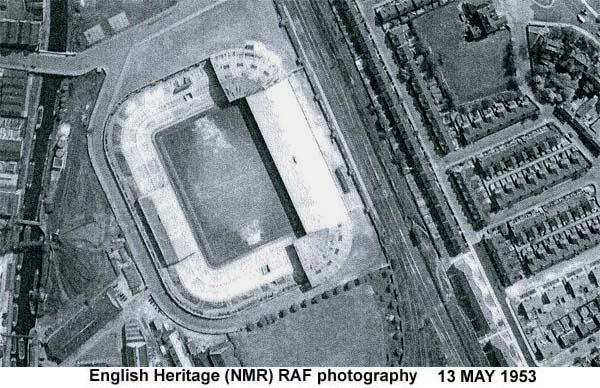 Below is a later view. 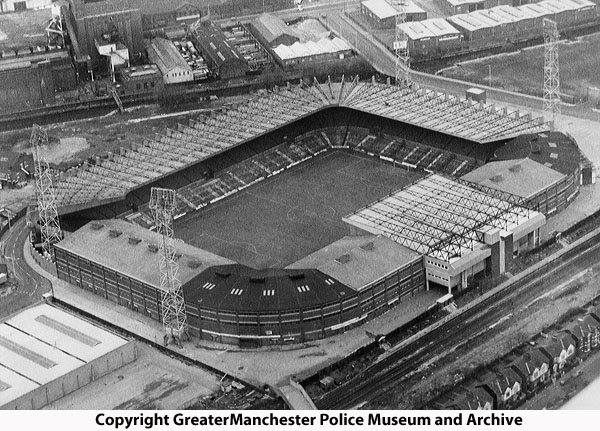 (The image above is shown
with the permission of the Greater Manchester
Police Museum and Archive. If you click on
this link you can see more historic images
from their Flickr
Photostream)
***************** The team became known as Manchester United in 1902 and 6 years later they were playing in a new ground on the edges of Trafford Park close to Manchester's docks. The club has been there ever since except for a brief period from 1941 to 1949 because of damage to the stadium caused by German bombing. Ironically during that period they shared the Maine Road ground home of their fiercest rivals Manchester City. Today Old Trafford is known by its "nickname" given to it by arguably its greatest star Bobby Charlton. Bobby called it the "Theatre of Dreams" a name which has stuck. The present stadium bears no resemblance at all to the one I visited as a child. 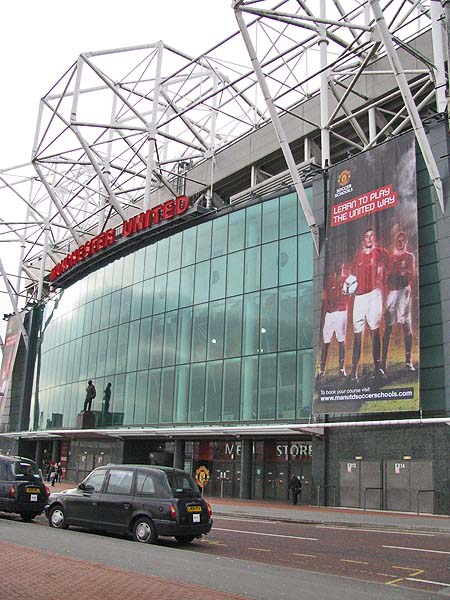 There have been a
number of major construction projects which have
created an impressive bowl shaped stadium which now
holds in excess of 76,000 fans and there are plans to
push that to 96,000 making the capacity even greater
than the new Wembly Stadium.
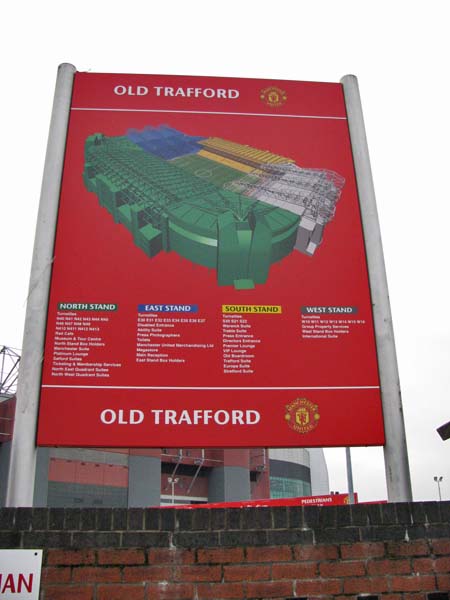 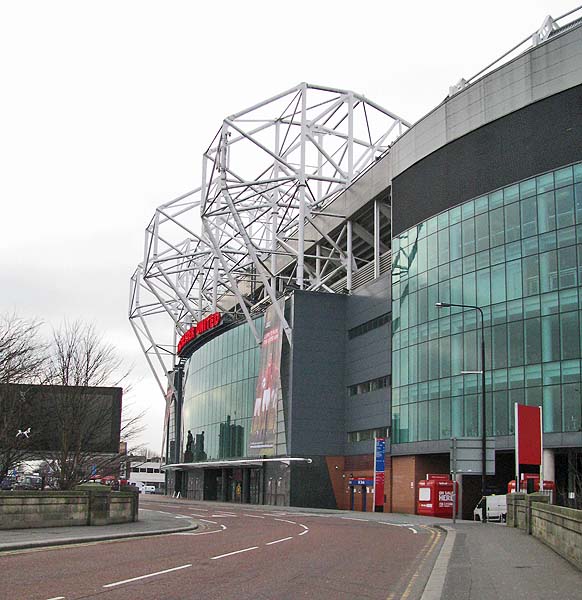 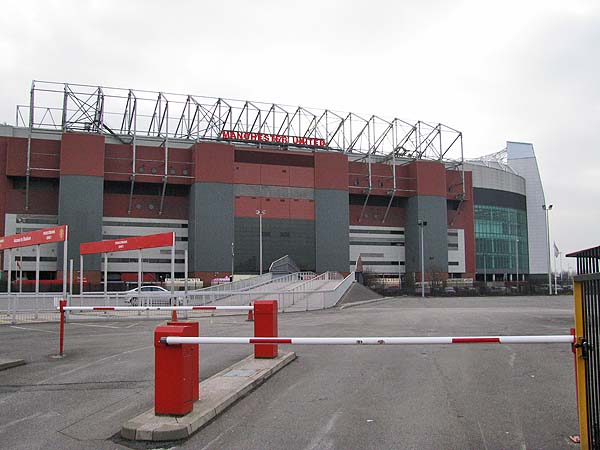 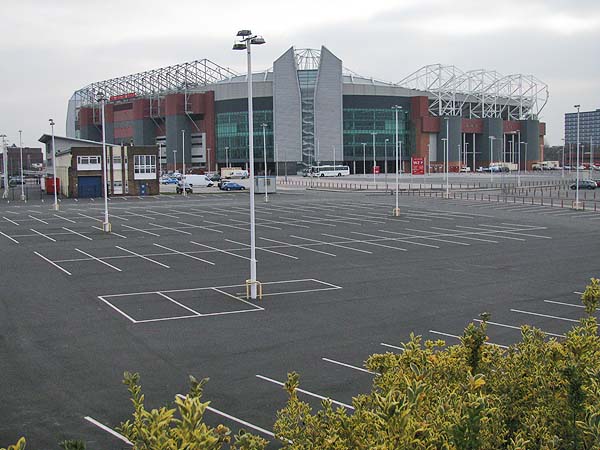 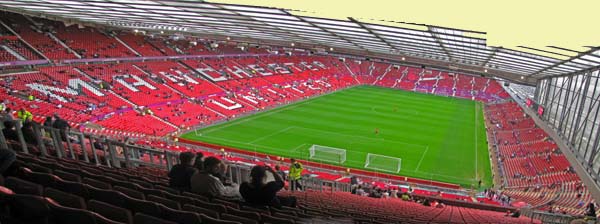 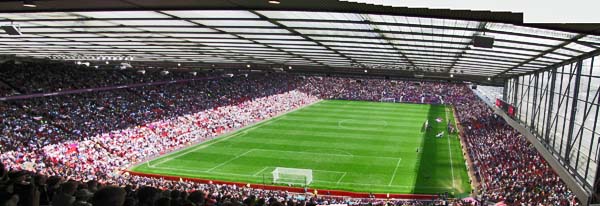 Many iconic figures
have played and coached at Old Trafford and some of
them are commemorated in the memorials on the
site. Across from the stadium on Matt Busby Way
is this statue of George Best, Dennis Law and Bobby
Charlton, entitled the "United Trinity".
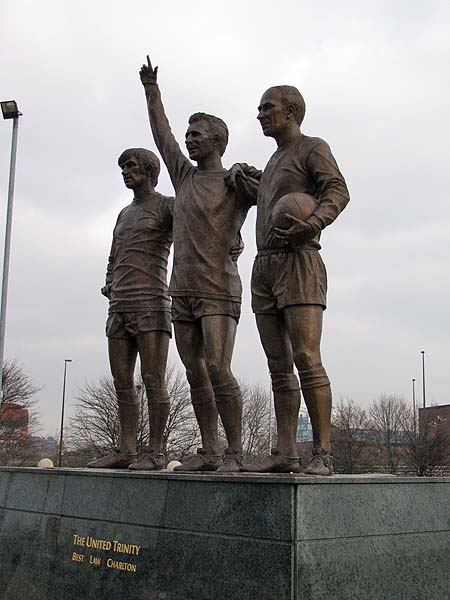 Matt Busby himself stands on the "touchline" above the entrance. 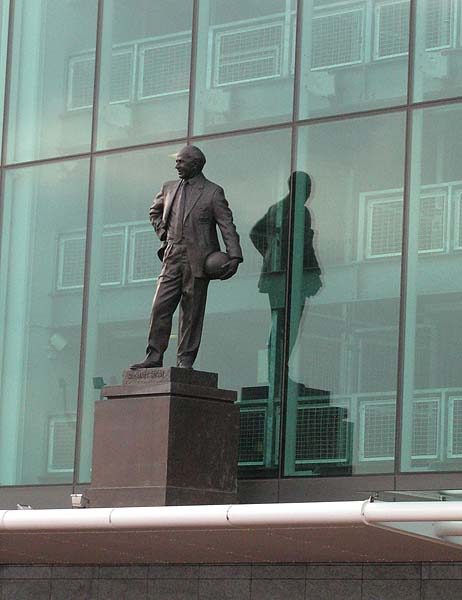 The day that will
never be forgotten though is February 6th 1958 when
Busby's Babes were returning from a European fixture
and their plane crashed at Munich airport. The
clock that marks the moment of that crash has been
moved from the front of the stadium and is now afixed
to the side of the East Stand.
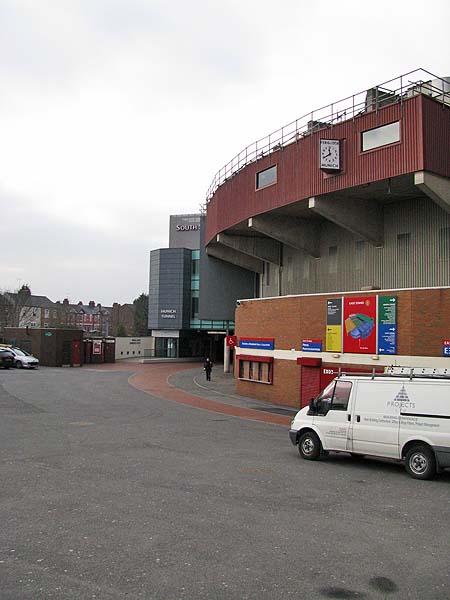 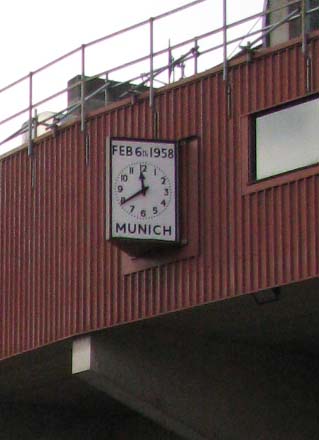 Nearby stands another memorial to those who died in the crash. 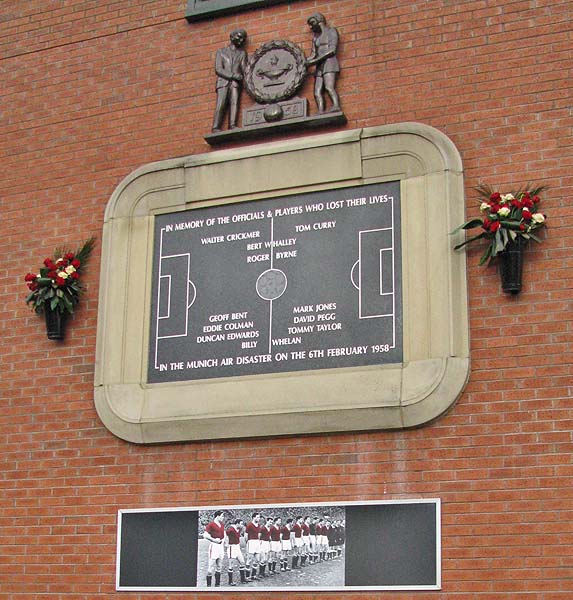 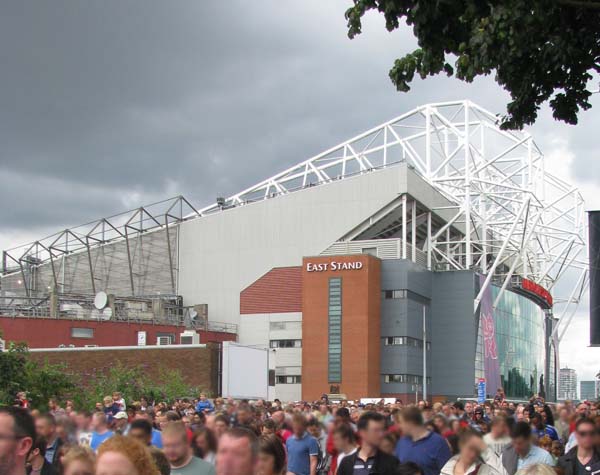 |